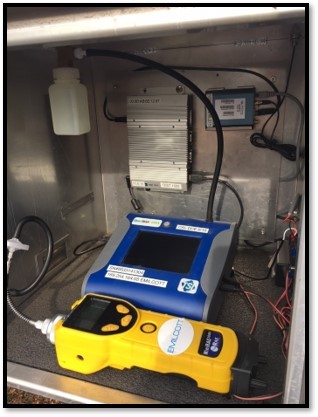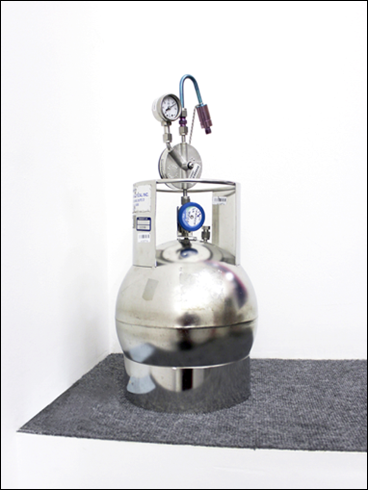Perimeter Air Monitoring Program Overview
During remediation activities, PSE&G is taking steps necessary to mitigate airborne contaminants. The vast majority of excavation will be performed under a tented enclosure. We will also use water misting, odor controlling foams, tarps, or temporarily stopping work until conditions improve to ensure our work does not impact the community.
Purpose of Perimeter Air Monitoring
To be protective of public health and safety, PSE&G is implementing a site-specific Perimeter Air Monitoring Plan (PAMP). The plan is designed for the specifics of the planned site activity and is reviewed by the project’s New Jersey Licensed Site Remediation Professional (LSRP). It will be in place throughout the duration of the remediation project.
The purpose of the Perimeter Air Monitoring is to monitor air quality at the site perimeter during the remediation activities to ensure protection of the community. The perimeter air monitoring measurements are compared to internally set alarm conditions and the PAMP’s action levels. The alarm levels serve as an early indicator to take action to ensure levels at the site perimeter do not exceed the applicable United States Environmental Protection Agency (EPA) residential air regional screening levels and New Jersey Department of Environmental Protection Short-Term Inhalation Exposure Reference Concentrations. Site-specific chronic action levels have been calculated for the project based upon the EPA residential air regional screening level equation.*
Real-time continuous perimeter air monitoring for vapors and dust will be performed during active remediation work for the duration of the project. Should early indicator alarm levels be reached, the PAMP details what steps will be taken to mitigate the condition and reduce the measurable levels, which could include temporarily stopping work.
Locations of Perimeter Air Monitoring Stations
When remediation work is performed, there are always a minimum of 4 air monitoring stations in operation between the work area and nearby buildings. Monitors may be moved as work areas change.

Interior view of air monitoring station (Dust meter and photoionization detector)
Air Monitoring Data Reporting
Both real time screening level results and confirmatory data for vapors and dust will be collected for evaluation of contaminant levels in air. Vapors are monitored and sampled for the presence of volatile organic compounds (VOCs) and dust is monitored and sampled for presence of metals and polyaromatic hydrocarbons (PAHs).

SUMMA Canister for collecting air sample
Confirmatory analytical results are provided by a State of New Jersey certified laboratory in accordance with the appropriate EPA, Occupational Safety and Health Administration (OSHA), and National Institute of Occupational Safety and Health (NIOSH) air sampling methods. Analytical results are summarized and compared to chronic action levels developed for the site, which are based on the EPA’s residential air regional screening level equation.
For vapors (i.e., VOCs), the most stringent chronic action level for the site is for benzene, which will be tracked for comparison to its chronic action level for the project.
* (https://epa-prgs.ornl.gov/cgi-bin/chemicals/csl_search).
Perimeter air monitoring began on May 2, 2024.
| Benzene (ppbV) as of 10/28/24 | |
| Chronic Action Level | 13.3 |
| Current Running Average | 0.24 |
For more explanation about calculating the current running average, click here.

